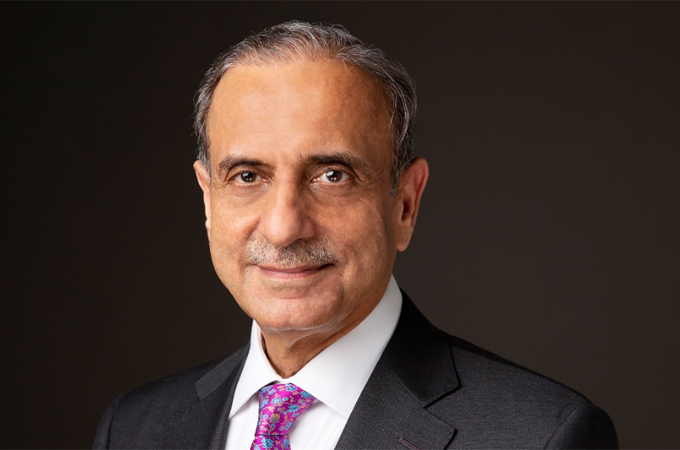Top 10 Saudi banks’ performance stays robust: report

COMMERCIAL NEWS
The performance of the top 10 banks in Saudi Arabia is largely robust and positive and operating income grew by 9.5 percent reflecting the effect of higher Non-Interest Income (NII), said a new study.
The year also saw NIMs improving by 3.5 percent with both the cost-to-income ratio (C/I) and the COR showing improvement. Overall, return on equity (ROE) increased to 14.5 percent while return on assets (ROA) stayed constant at a healthy 2.0 percent. Looking ahead, we expect the outlook for Saudi banks to remain stable to positive, said 4th edition of the Kingdom of Saudi Arabia (KSA) Banking Pulse for fiscal year 2023, by Alvarez & Marsal (A&M), a leading global professional services firm.
FY’23 witnessed liquidity coming under relative pressure in as loan growth outpaced deposit growth amidst the high interest rates.
During the year, GRE deposits reached a record high at 31.2 percent (2022:28.4%) of total KSA bank deposits; this accounted for 68.2 percent of the total deposit increase in FY’23. The resulting in increase in money supply in the economy helped moderate the liquidity conditions in the Saudi Arabian banking system.
NIM expanded marginally to 3.1 percent as the yield on credit (YoC) expanded (+2.1 percent YoY) more than cost of funds (CoF) (+1.8 percent YoY). The slower pace of differential loan growth in comparison to deposit growth came as Saudi Central Bank (SAMA) increased the policy rate.
A&M’s KSA Banking Pulse examines data of the 10 largest listed banks in the kingdom, comparing the FY’23 results against FY’22 results. Using independently sourced published market data and 16 different metrics, the report assesses banks’ key performance areas, including size, liquidity, income, operating efficiency, risk, profitability, and capital.
The banks analysed in A&M’s KSA Banking Pulse are Saudi National Bank (SNB), Al Rajhi Bank, Riyad Bank (RIBL), Saudi British Bank (SABB), Banque Saudi Fransi (BSF), Arab National Bank (ANB), Alinma Bank, Bank Albilad (BALB), Saudi Investment Bank (SIB) and Bank Aljazira (BJAZ).
The prevailing trends identified for FY 2023:
* Loans & advances (L&A) growth outpaced the deposits growth in 2023. Aggregate L&A for top 10 banks grew at 10.6 percent YoY whereas aggregate customer deposits increased by 7.8 percent YoY in FY’23. Consequently, loan-to-deposit ratio (LDR) increased 2.5 percent YoY to 99.2 percent.
* Total operating income increased by 9.5 percent YoY as compared to 15.4 percent YoY in FY’22. The growth in operating income was primarily driven by NII which increased by 10.9 percent YoY and non-funded income which increased by 4.3 percent YoY in FY’23. Out of all the top 10 banks, SABB reported significant increase of 31.7 percent YoY in operating income due to substantial increase in net interest income (+39.6 percent YoY).
* NIM improved to 3.1 percent due to higher spread between yield on credit expanded (+2.1 percent YoY) more than cost of funds (+1.8 percent YoY) in FY’23 and also due to slower pace of differential loan growth in comparison to deposit growth. Aggregate net interest income (+39.6 percent YoY) grew due to an increase in the SAMA policy rate (+100bps YoY) during the year.
* Cost-to-income (C/I) ratio improved by 0.6 percent points to 31.9 percent in FY’23. The operating income reported growth of 9.5 percent YoY whereas the operating expense grew at a slower rate of 7.5 percent YoY in FY’23. In FY23, seven out of all ten banks witnessed improvement in C/I ratio.
* The cost of risk improved 5bps YoY to settle at 0.41 percent for FY’23 as total impairments decreased by marginally by 1.1 percent YoY to AED 9.8bn in FY’23. BALB reported a significant improvement of 29bps YoY and RIBL reported highest deterioration of 20bps YoY in FY’23.
* Rising interest rates boosted the profitability of KSA banks. Aggregate net income increased by 11.8 percent YoY, as a result ROE improved by 0.8 percent points YoY to 14.5 percent in FY’23. However, RoA remained stable at 2.0 percent in FY’23, with positive traction.
Asad Ahmed, Managing Director and Head of Middle East Financial Services at A&M, commented: “Our 4th annual KSA Banking Pulse underscores the stability and growth potential of the Saudi banking sector, which has shown remarkable operating income growth and an uptick in return on equity. Despite some challenges in the economic landscape, the industry has adeptly navigated through, leveraging favourable credit conditions. Our analysis reflects the sector's enduring stability and promising upward trajectory, reinforcing our optimism for its future.
“Considering Saudi’s Vision 2030, the banking sector in the Kingdom is expected to play a central role in achieving its objectives. Moving forward, we expect positive outlook for KSA banks with, prospective loan growth, improving asset quality and well capitalised books. Given the upcoming scenario of interest rate cuts by the second half of 2024, we anticipate that NIMs will remain stable at around 3.0 percent during the year,” Ahmed said. – TradeArabia News Service
